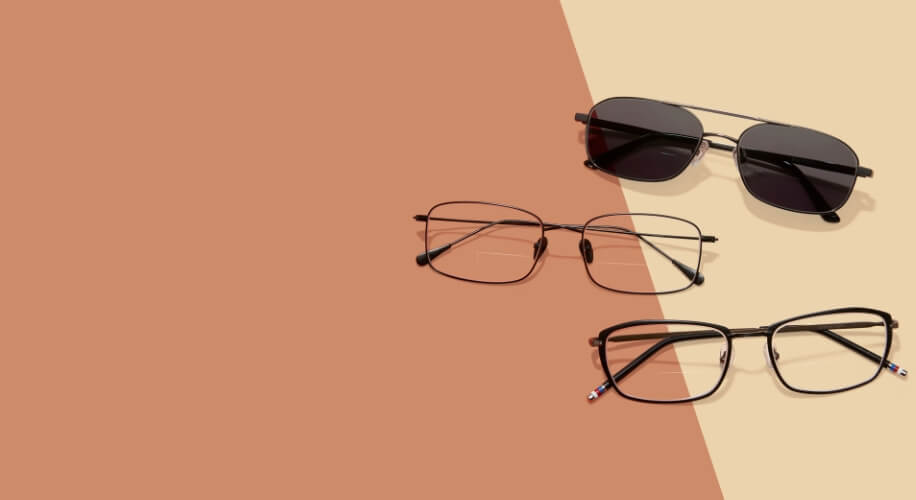Bifocal Glasses: How They Work and Who Needs Them
- BY Dr. Steven Liem
- IN Glasses

Struggling to read the fine print or see distant objects clearly without constantly switching your glasses? Bifocal glasses might be the solution you’ve been searching for. Let’s explore the unique features of bifocals and understand how they can make daily tasks like reading or driving more effortless for those experiencing presbyopia or other vision needs.
Understanding Bifocal Glasses
Bifocal lenses have been a game-changer in the realm of eyewear since their invention by Benjamin Franklin. They are specially crafted lenses that contain two optical powers to correct vision for both close-up and distance viewing. The term “bifocal” literally means two focuses: one for viewing objects at a distance, and another for seeing things up close.
How Bifocals Work

The mechanics of bifocal glasses are straightforward. These lenses are divided into two distinct sections. The upper part is typically for distance vision, while the lower segment is designed for near vision, helping with tasks like reading or sewing. The division line between these sections can be visible or blended, depending on the type of bifocals you choose.
- The Upper Section: Corrects myopia (nearsightedness), hyperopia (farsightedness), and astigmatism for clear distance vision.
- The Lower Section: Provides magnification for close-up tasks, addressing presbyopia – an age-related condition where the eyes find it harder to focus on nearby objects.
Types of Bifocal Lenses
There are several types of bifocal lenses available to suit different preferences and lifestyles:
- Flat-Top Bifocals: The most common type, with a D-shaped near segment on the bottom.
- Round Segment Bifocals: Have a circular near segment, offering a more aesthetic look.
- Executive Bifocals: Feature a horizontal line across the entire width of the lens, providing a larger area for reading.
Who Benefits from Bifocal Glasses?
Bifocals are particularly beneficial for individuals who require assistance with both near and distance vision. This need often arises from a common age-related condition known as presbyopia, which typically starts affecting people in their 40s. However, bifocals can also be useful for those who have different vision prescriptions for near and far distances regardless of age. They’re an excellent choice for people who prefer not to switch between multiple pairs of glasses throughout the day.
Identifying the Need for Bifocals

To determine if bifocals are right for you, consider the following signs:
- Difficulty Focusing: You find it hard to focus on small text or objects up close.
- Eye Fatigue: You experience eye strain or headaches after prolonged periods of reading or detailed work.
- Convenience: You’re looking for the convenience of having one pair of glasses for all your visual needs.
If you’re experiencing these symptoms, we recommend visiting an eye care professional who can provide a comprehensive eye exam and discuss if bifocals might be the right choice for you.
Choosing the Right Bifocals
Selecting the perfect pair of bifocal glasses involves more than just lens type. It’s also about finding the right frame that suits your face, lifestyle, and personal style. At Zenni Optical, we offer a wide range of frames and lenses to ensure that you find a pair of bifocals that not only corrects your vision but also complements your daily life.
Choosing bifocals for the first time can feel daunting, but we’re here to help make the transition seamless. We’ll guide you through the process of selecting your frames, understanding your prescription, and even measuring your pupillary distance to ensure your new glasses are a perfect fit. Our goal is to provide you with eyewear that enhances your vision and fashion sense, all while ensuring maximum comfort and functionality.


